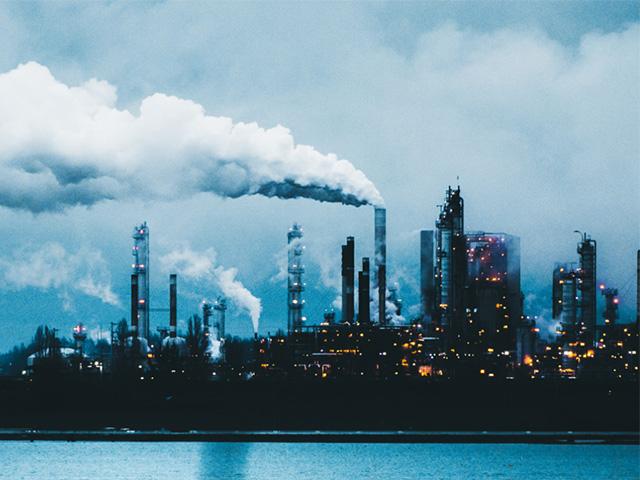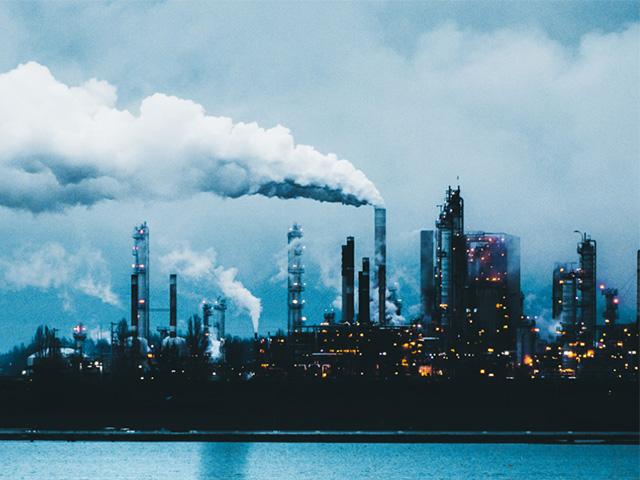Ag Weather Forum
Greenhouse Gas Emissions Jumped in 2022
The annual greenhouse gas emission report by the National Oceanic and Atmospheric Administration (NOAA) is out, and it showed that the top three greenhouse gases continued to reach what are termed "uncharted levels" in 2022. Those gases are carbon dioxide, methane, and nitrous oxide. These three gases are the gases emitted by human activity that are the largest contributors to climate change, according to NOAA scientists.
The report noted that carbon dioxide atmospheric content rose by 2.13 parts per million (ppm) to 417.06 ppm, about the same rate observed during the last decade. Atmospheric carbon dioxide content is now 50% higher than pre-industrial levels. 2022 was the 11th consecutive year when carbon dioxide increased by more than 2 ppm, the highest sustained rate of carbon dioxide increases in the 65 years since monitoring began. Prior to 2013, three consecutive years of carbon dioxide growth of 2 ppm or more had never been recorded.
Atmospheric methane content is now more than two and a half times as much as it was in pre-industrial times. Methane volume increased to an average of 1,911.9 parts per billion (ppb) in 2022. Methane is much less abundant than carbon dioxide; however, it is much more potent than carbon dioxide at trapping heat in the atmosphere. The NOAA report noted that 2022 methane increase was 14.0 ppb, the fourth-largest annual increase recorded since NOAA's systematic measurements began in 1983. The 2022 volume follows record growth in 2020 and 2021.
P[L1] D[0x0] M[300x250] OOP[F] ADUNIT[] T[]
We come now to nitrous oxide and a direct tie-in to agriculture. Nitrous oxide is identified as the third-most significant anthropogenic greenhouse gas. Last year, nitrous oxide levels rose by 1.24 ppb to 335.7 ppb. That level ties with 2014 as the third-largest jump since 2000, and a 24% increase over the nitrous oxide pre-industrial level of 270 ppb. The top two years of nitrous oxide content growth occurred in 2020 and 2021. The NOAA report stated that "Increases in atmospheric nitrous oxide during recent decades are mainly from use of nitrogen fertilizer and manure from the expansion and intensification of agriculture."
The report pointed out that carbon dioxide (CO2) is the star of the show when it comes to greenhouse gas content. "CO2 is by far the most important contributor to climate change," the report said. "The main driver of increasing atmospheric CO2 is the burning of fossil fuels, with emissions increasing from 10.9 billion tons per year in the 1960s -- which is when the measurements at the Mauna Loa Observatory in Hawaii began -- to about 36.6 billion tons per year in 2022, according to the Global Carbon Project, which uses NOAA's greenhouse gas measurements in its estimates.
The amount of CO2 in the atmosphere today is comparable to where it was around 4.3 million years ago during the mid-Pliocene epoch, when sea level was about 75 feet higher than today, the average temperature was 7 degrees Fahrenheit higher than in pre-industrial times and studies indicate large forests occupied areas of the Arctic that are now tundra."
The full NOAA report is available here: https://www.noaa.gov/….
Bryce Anderson can be reached at bryce.anderson@dtn.com
Follow him on Twitter @BAndersonDTN
(c) Copyright 2023 DTN, LLC. All rights reserved.





Comments
To comment, please Log In or Join our Community .